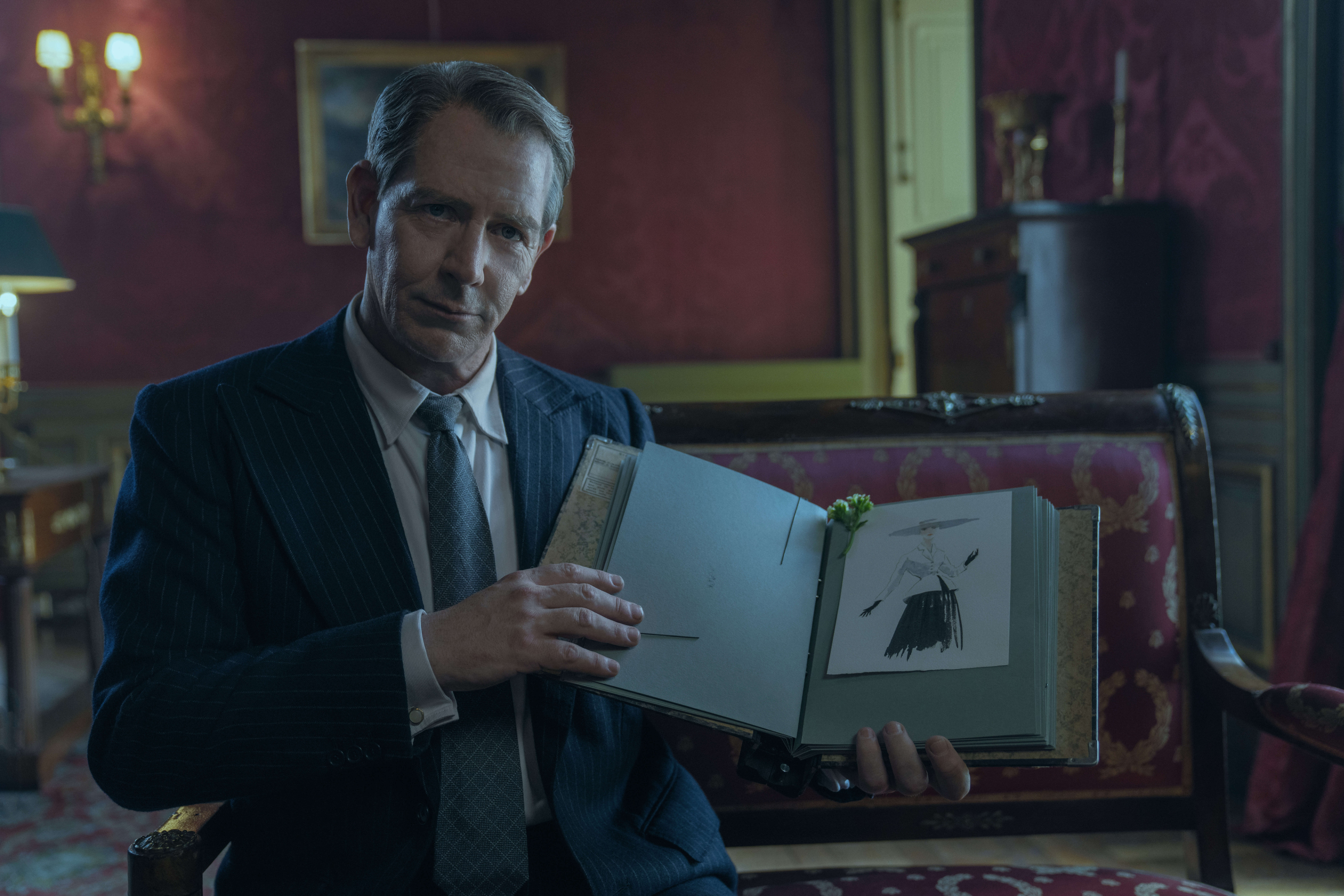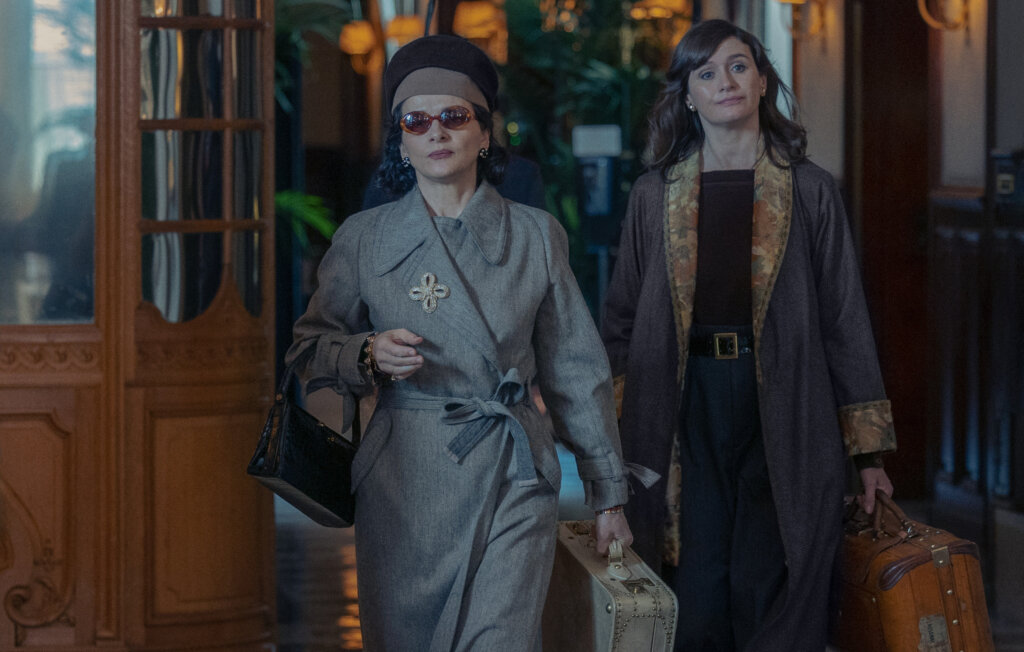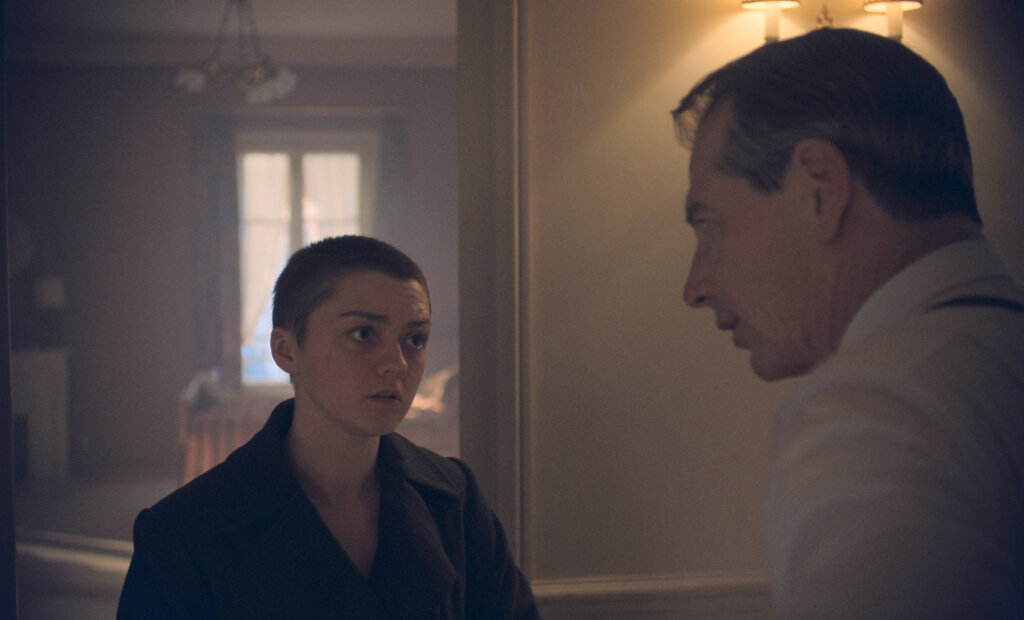A ‘new look’ at the Holocaust through fashion recycles old excuses for Nazi collaborators
‘The New Look’ is a show about World War II, told through Coco Chanel and Christian Dior

Ben Mendelsohn as Christian Dior, showing off a new design. Courtesy of Apple TV+
What does haute couture have to do with the Holocaust? According to The New Look, a series from Apple TV+, everything.
The series follows Christian Dior and Coco Chanel during and after World War II, and while the acting is a bit clunky, the visuals and costumes are sumptuous and the history is fascinating. As is relatively well-known today, Chanel collaborated with the Nazis: She had an affair with a Nazi official, invoked the Aryan laws to wrest her perfume business away from her Jewish business partners and even served as a Nazi spy, attempting to use her high society connections to broker a deal between the Germans and Winston Churchill. Lesser known is the fact that Dior’s younger sister Catherine was deeply involved with the French Resistance — so much so that she was deported to the Ravensbrück concentration camp.
But the series does not position itself as simply being a story about the history behind the fashion; it’s a story that positions fashion as integrally woven into both the war and the Holocaust.

“During World War II, the Germans occupied Paris for four years, forcing the French to submit to Nazi occupation and oppression,” reads the series’ opening text. “When the war ended, an unknown designer would emerge as the French icon of hope. This is the story of how creation helped return spirit and life to the world.”
It’s already hard to believe that the unaffordable world of haute couture was central to rebuilding France after the war. But there’s another piece of history skipped in this framing: France’s Jews. The, well, Jewish aspect of the Holocaust — antisemitism, the Final Solution, even any Jewish characters — is barely mentioned in The New Look.
This is a complaint people often make about pieces of Holocaust media, and it’s sometimes a lazy one. While there are many reasons to be concerned about focusing discussion of World War II on anything that distracts from the horrors of its driving antisemitism, it encompassed more than the Holocaust. It’s true that plenty of people in the French Resistance were more motivated by nationalistic patriotism — the desire to be proudly French and not submit to Germans — not their love for Jews, but that doesn’t mean their stories are irrelevant and shouldn’t be told.
But The New Look attempts to be about the Holocaust and about the life of non-Jews — resistors and collaborators both — and about the birth of modern fashion to boot. Ultimately, that makes it fail on all counts.

The show’s first several episodes are driven nearly entirely by Catherine’s involvement in the Resistance and the impact of her work on her brother, yet they never speak of why they’re fighting. The show follows Chanel to Nazi galas and dinners — she even meets Heinrich Himmler — yet we rarely hear them speak about what they’re doing or what they care about.
Perhaps most problematically, while the show details Chanel’s collaboration with the Nazis, it depicts her choices as a purely amoral result of crafty strategizing around business pressures. She’s not a sympathetic character per se — she’s too self-serving — but her reasons seem, well, reasonable, and she’s often shown being kind to her friends.
While many Nazi collaborators did probably see themselves as simply focused on self-preservation, Chanel wasn’t just being pragmatic; she was openly antisemitic. Yet in The New Look, the closest we see her come to making an antisemitic statement is calling the Jewish Wertheimer brothers, who owned her perfume line, “an error in judgment” to a Nazi compatriot. Chanel, the show seems to argue, was ever the opportunist, but not a fundamentally hateful person. It’s not too different from the portrayal of Dior, who continued to make gowns for Nazi wives and girlfriends throughout the war, but did so seemingly purely out of self-preservation — and while housing Resistance meetings in his Paris apartment.

As much as the war did deeply impact both Dior and Chanel, The New Look is, of course, ultimately a show about fashion. Unfortunately, in its push to center the war, we barely even see the creations that made Dior and Chanel so famous.
There’s a phenomenon that has emerged in recent decades of movies, books and TV shows using World War II as a way to signal that they’re a serious endeavor, a piece of prestige media. After all, who would flippantly take on the Holocaust?
But this has, instead, led to a weakening of the Holocaust, a transformation into what Art Spiegelman, author of Maus, has termed “holokitsch” — mawkish, insipid and ultimately uplifting tales of the war. And The New Look, despite its fancy costuming and big budget, falls short of real artistry or depth, in both its historical interpretation and its fashion.
In The New Look, Dior is the hero, rising out of the ashes of the war. But the show operates more like Chanel did — using World War II to serve its own interests.






















